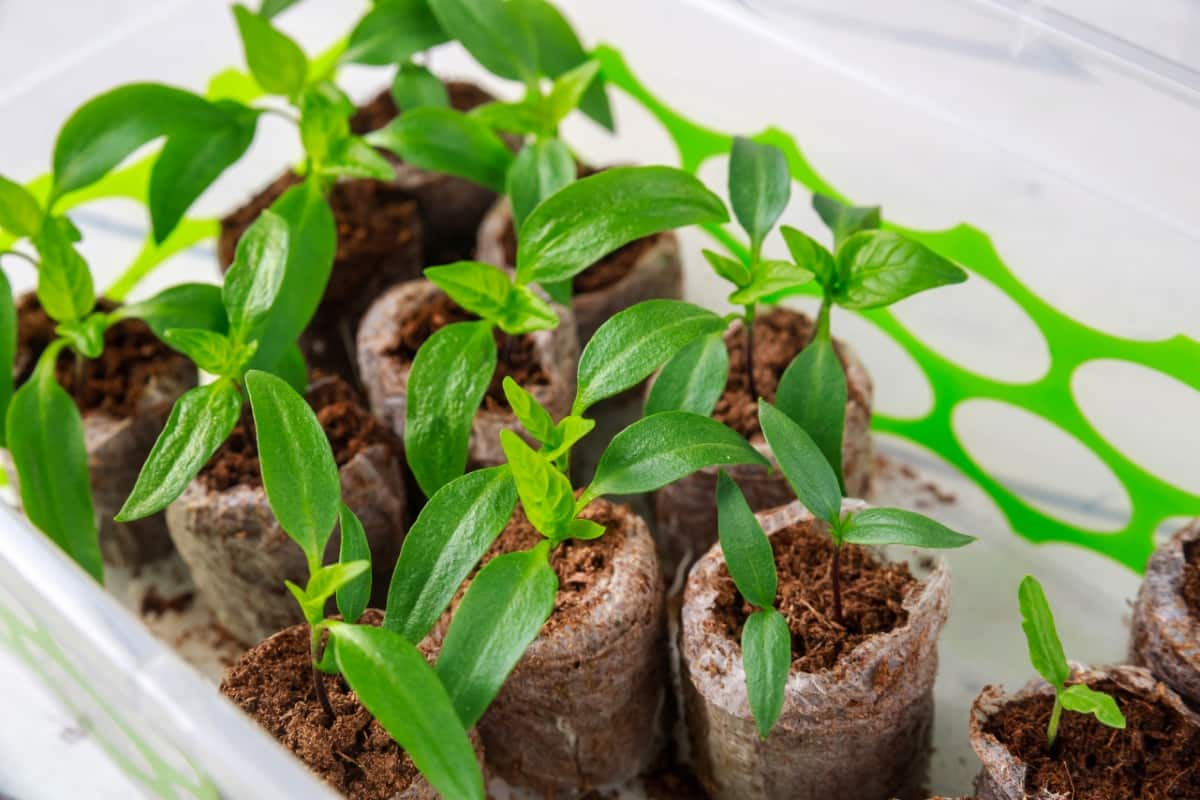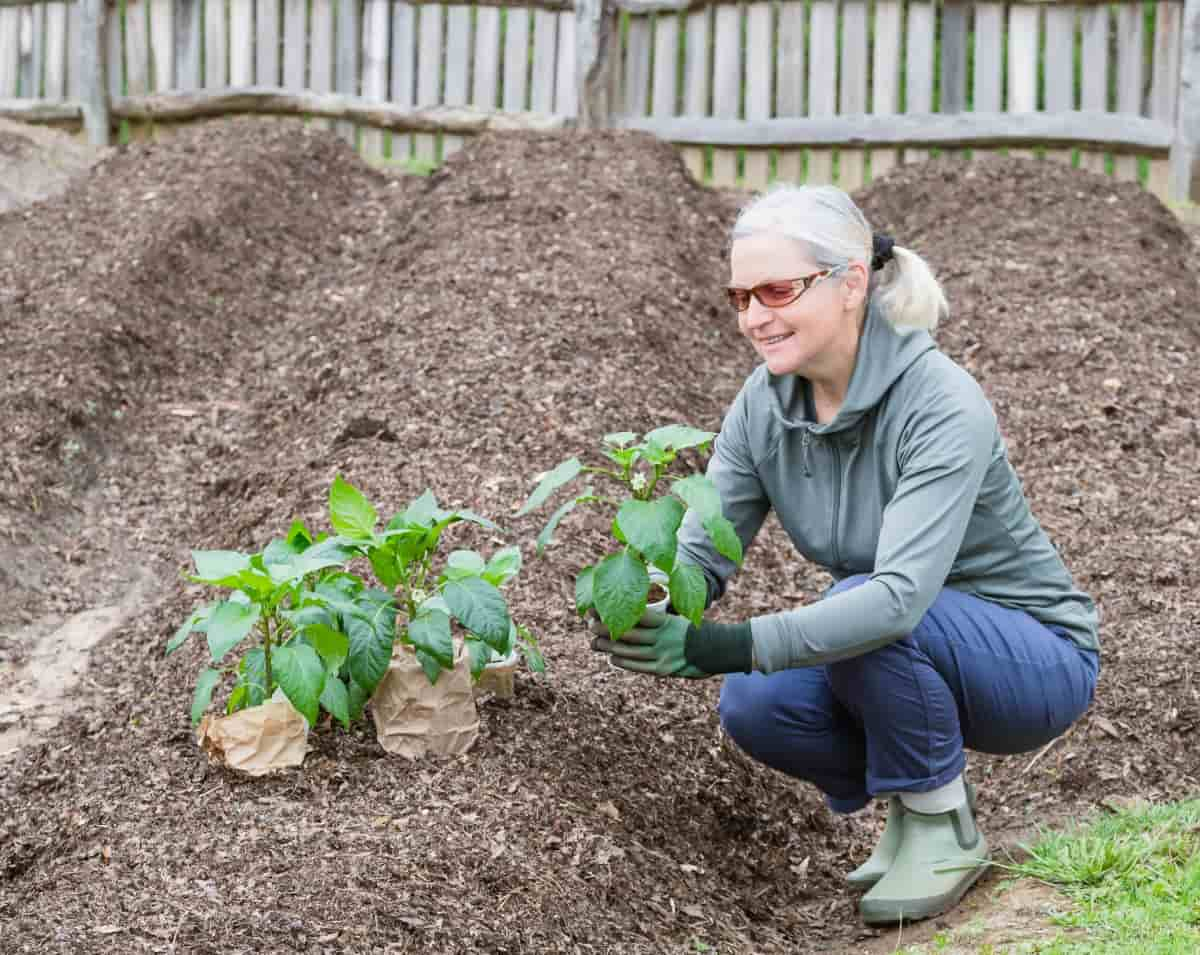Growing capsicum (also known as bell peppers) from seeds can be a rewarding experience. Whether you’re a seasoned gardener or a beginner, this guide will walk you through the process of growing capsicum from seeds and provide some insights into how long it takes for them to grow.

How to Grow Capsicum from Seeds
Understanding the Capsicum Plant and Its Varieties
The Capsicum plant belongs to the Solanaceae family and is native to the Americas. It is believed to have originated in Mexico and South America, and its cultivation quickly spread to other parts of the world due to its culinary and medicinal value. There are several varieties of Capsicum plants, each with its unique characteristics and uses.
- Bell Peppers: Bell peppers are mild and sweet. They come in various colors: green, red, yellow, and orange. Bell peppers are often used in stir-fries, salads, and stuffed dishes.
- Jalapeno Peppers: They are medium-spicy and are commonly used in Mexican cuisine. They have a distinctive flavor and are often used in salsas, nachos, and spicy dishes.
- Habanero Peppers: Habanero peppers are extremely hot and have a fruity flavor. They are one of the hottest peppers available and are often used sparingly in dishes to add heat.
- Cayenne Peppers: Cayenne peppers are moderately spicy and are often used in powdered form. They are commonly used in hot sauces, marinades, and spicy dishes.
- Poblano Peppers: Poblano peppers are mild and have a rich, earthy flavor. They are often used in Mexican cuisine, mainly in dishes like chiles rellenos and mole sauce.
- Serrano Peppers: Serrano peppers are spicy and have a bright, crisp flavor. They are commonly used in salsas, sauces, and spicy dishes.
- Thai Peppers: Thai peppers are extremely spicy and are commonly used in Thai cuisine. They are small in size and pack a punch in terms of heat.
Selecting the Right Seeds for Capsicum Cultivation
When selecting seeds, it is important to consider factors such as the climate in your region, the desired taste and heat level, and the intended use of the capsicums. For example, if you live in a colder climate, you may want to choose a more cold-tolerant variety. Similarly, if you plan to use capsicums for cooking or preserving, you may want to select a variety with a specific flavor profile.
It is also important to ensure that your chosen seeds are high quality. Look for seeds that are fresh, plump, and free from any signs of damage or disease. Purchasing seeds from reputable suppliers or nurseries can help you get high-quality seeds.
Preparing the Ideal Growing Environment for Capsicum Seeds
Soil Preparation: Capsicum seeds thrive in well-drained soil rich in organic matter. Before sowing the seeds, prepare the soil by removing any weeds or debris and loosening it with a garden fork or tiller. Adding compost or well-aged manure can improve the soil’s fertility and structure.
Temperature and Light: Capsicum seeds require warm temperatures to germinate and grow. The ideal temperature for capsicum seed germination is between 25 to 30°C. Provide adequate sunlight or use grow lights to ensure the seeds receive 12 to 16 hours of light daily.
Watering: Capsicum seeds need consistent moisture for germination and growth. Water the soil thoroughly after sowing the seeds and ensure it remains moist but not waterlogged. Avoid overwatering, as it leads to the seeds rotting or damping off the seedlings.
In case you missed it: 10 Common Problems With Garden-Grown Capsicum Plants: Treatment and Solutions

How to Plant Capsicum Seeds: Techniques and Best Practices
Seed Depth and Spacing: Capsicum seeds should be sown at approximately 0.5 to 1 centimeter. Space the seeds at least two to three centimeters apart for proper growth and airflow between the seedlings.
Germination and Transplanting: Capsicum seeds typically germinate within 7 to 14 days. Once the seedlings have grown to 5 to 7 centimeters and have developed their first set of true leaves, they can be transplanted into larger containers or directly into the garden bed.
Hardening Off: Before transplanting capsicum seedlings into the garden, it is important to acclimate them to outdoor conditions gradually. Seedlings are hardened off by exposure to increasing amounts of sunlight and outdoor temperatures for 7 to 10 days.
Providing Optimal Watering and Moisture Levels for Capsicum Seedlings
The frequency of watering capsicum seedlings depends on various factors like temperature, humidity, and soil type. Generally, seedlings need water when the top inch of soil feels dry to the touch. Soil that is completely dry can be stressful to seedlings, so try to avoid it.
To ensure proper watering, it is recommended to use a watering can or else a gentle spray nozzle that provides a fine mist. This helps prevent excess water from splashing onto the leaves, which can cause fungal diseases. Water the seedlings until the soil is evenly moist, but avoid creating puddles or waterlogged conditions.
Nurturing Capsicum Seedlings: Temperature, Light, and Humidity Requirements
- Maintain a temperature range of 21-29°C during the daytime and 15-21°C at night. Avoid exposing the seedlings to temperatures below 15°C as it can stunt their growth.
- Place the seedlings in a location that receives at least six hours of direct sunlight or provide them with 12-16 hours of artificial light daily. Consider using fluorescent grow lights if natural sunlight is limited.
- Capsicum seedlings thrive in moderate humidity levels between 50-70%. Increase humidity using a humidifier or a tray filled with water near the seedlings.
In case you missed it: Hydroponic Capsicum/Bell Pepper Farming in a Greenhouse: Key Rules to Start from Scratch

Transplanting Capsicum Seedlings into Larger Containers or Garden Beds
Wait until the seedlings have developed a strong root system and are at least 4-6 inches tall before transplanting. Typically, this occurs 6-8 weeks after sowing the seeds. Choose containers at least 12 inches deep and wide to accommodate the growing roots. Ensure the containers have proper drainage holes to prevent waterlogging. Gently remove the seedlings from their existing containers, taking care not to damage the roots. Place them in the prepared larger containers or garden beds, ensuring they are at the same depth.
Fertilizing Capsicum Plants for Healthy Growth and Fruit Production
- Use a balanced fertilizer like N-P-K ratio of 10-10-10 or similar to promote healthy foliage development during the vegetative stage.
- Once the plants start flowering, switch to a fertilizer with higher phosphorus and potassium content (N-P-K ratio of 5-10-10 or similar). This promotes fruit set and development.
- Apply the fertilizer per the manufacturer’s instructions, taking care not to over-fertilize. Water the plants after fertilizing to ensure the nutrients are properly absorbed.
Managing Pests and Diseases in Capsicum Plants
Regular Inspection: Regularly inspect your capsicum plants for signs of pests or diseases. Look for chewed leaves, discoloration, wilting, or abnormal growth patterns. Early detection can help prevent further damage.
Natural Predators: Encourage beneficial insects like ladybugs, lacewings, and parasitic wasps in your garden. These predators feed on common pests like aphids, whiteflies, and caterpillars, reducing their populations naturally.
Organic Pest Control: If pest infestations become severe, consider using organic pest control methods. Neem oil, insecticidal soaps, and garlic pepper spray are effective options that are safe for both plants and the environment.
Crop Rotation: Avoid planting capsicum in the same location year after year. Crop rotation helps break the pest and disease cycles by disrupting their life cycles and reducing the buildup of pathogens in the soil.
Disease-resistant Varieties: Choose disease-resistant capsicum varieties when possible. These varieties have been bred to resist common diseases, reducing the risk of infection.
How Long Does it Take to Grow Capsicum From Seed?
The time takes to grow capsicum from seed is typically around 7-14 days to germinate. After germination, it takes an additional 60-90 days for the plants to reach maturity and start producing fruits. However, this timeline can vary, and it is essential to provide optimal growing conditions to ensure the best results. As an ideal capsicum growing season, it can be grown during summer. The time it takes for capsicum plants to grow from seeds can vary depending on various factors such as temperature, moisture, and variety.
In case you missed it: How to Increase Female Flowers in Capsicum/Bell Pepper: Explained in 10 Simple Steps

Conclusion
By following these guidelines and providing the necessary care, you can ensure successful capsicum cultivation and enjoy a bountiful harvest of flavorful peppers.
- Feed Your Flock for Less: Top 10 Tips to Save on Chicken Feed
- Ultimate Guide to Ossabaw Island Hog: Breeding, Raising, Diet, and Care
- Hatching Answers: The Top 10 Reasons Your Chickens Aren’t Laying Eggs
- Eggs and Economics: Breaking Down the Cost of Raising Backyard Chickens
- Defend Your Greens: Proven Methods to Keep Iguanas Out of Your Garden
- Ultimate Guide to Cinnamon Queen Chicken: A Comprehensive Guide for Beginners
- Ultimate Guide to California Tan Chicken: Breeding, Raising, Diet, Egg-Production and Care
- Ultimate Guide to Marsh Daisy Chicken: Breeding, Raising, Diet, and Care
- 10 Types of Chicken Farming Businesses You Can Start for Profits